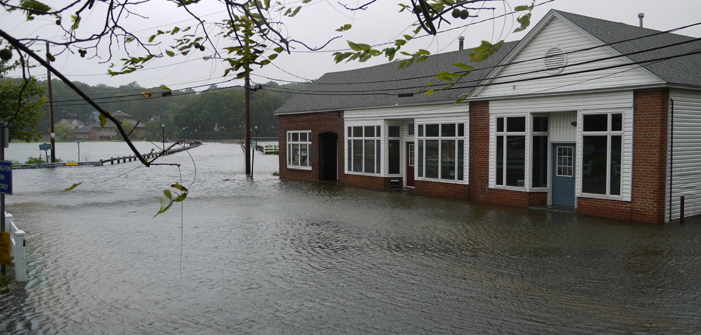Government Planning To Build Thousands Of New Homes In Flood Risk Areas
Investigation reveals Environment Agency flood prevention staff cut by 230 in three years
Nearly half the areas earmarked for fast-tracked housing development by a flagship government scheme are at significant risk of flooding, making thousands of new homes potentially uninsurable, according to a Greenpeace investigation.
The sites targeted by a recent house-building drive unveiled by Chancellor George Osborne include two areas threatened by the latest floods and others which were inundated during previous emergencies, Greenpeace can reveal today.
The findings will raise more questions about the government’s approach to flood risk management amidst growing controversy over delays in the construction of flood defences for existing homes in areas hit by flooding in Cumbria and Lancashire.
Earlier this year, the Chancellor announced a flagship housing scheme which saw 20 brownfield sites around the country designated as new ‘housing zones’, with local councils given access to money and experts to expedite the building process.
Greenpeace UK researchers used details obtained through Freedom of Information requests to plot the location of these housing zones, and cross-referenced this with flood risk maps from the Environment Agency.
They found around nine of the 20 zones, comprising a total of 9,000 planned new homes, are in areas now identified as being partially or fully at risk from flooding. Under the terms of a new government flood-insurance scheme soon to be implemented, these properties would be excluded from cover. This would leave homeowners reliant on commercial insurers who may choose not to insure homes built in flood zones, or do so at prohibitively expensive rates.
A spokesperson for Flood Re confirmed to Greenpeace that ‘properties built from 2009 onwards’ in flood-risk areas are still excluded from the government scheme, adding: “It would be irresponsible to incentivise developers to build in such areas simply because those properties could have their insured flood risk ceded to Flood Re.”
Greenpeace UK also obtained new figures showing that the number of people employed by the Environment Agency to work on Flood and Coastal Erosion Risk Management fell by 230 – a 5% cut – in the last three years. The agency plays a key role advising councils on flood risk.
Commenting on the findings, Greenpeace UK chief scientist Dr Doug Parr said:
“The current flood emergency isn’t even over yet, and the government is already storing up the next one. Rushing to build thousands of new homes in flood-risk areas whilst at the same time cutting flood protection staff is a recipe for disaster. David Cameron’s lofty rhetoric at the UN climate summit is helpful, but if he’s serious about protecting Britain from the impacts of climate change, these words need to translate into climate-savvy policies on the ground. When it comes to energy, flood defences, and other big infrastructure projects, we need the government’s hands to start following what the government’s mouth is saying rather than acting of their own accord.”
In Yorkshire there are flood warnings along the River Ouse in zones ministers have allocated for major new homebuilding, while in Wakefield areas near to proposed developments were underwater last month. One housing zone not marked as ‘at risk’ is planned for Ashchurch, Tewskbury, an area which has seen flooding hit in the past week.
The new housing zones located in areas at risk of flooding include:
- Around 1,000 homes planned for Hinkley, Bridgwater in Somerset, one of the areas that was totally inundated in the floods of 2014. Those floods were labelled a “major incident”. The local district council has paid out more than £280,000 in grants and tax relief to flood victims in the last three years.
- Another of the areas identified for new building is in Greater Gainsborough in Lincolnshire. At least 750 houses are planned in 15 sites around the towns of Gainsborough and Morton- however those in Morton are at high risk of flooding with no defenses. The borough council that is responsible for Morton has seen its flood prevention budget drop by 24% compared to last year.
- In Wakefield, Yorkshire town planners are pushing forward plans to develop 1,200 new homes in a development on the banks of the Aire river, near to the town of Castleford. Last August, Castleford flooded and, according to local news reports, was under around five foot of water. Motorists had to be rescued from submerged cars.
Government Planning To Build Thousands Of New Homes In Flood Risk Areas


